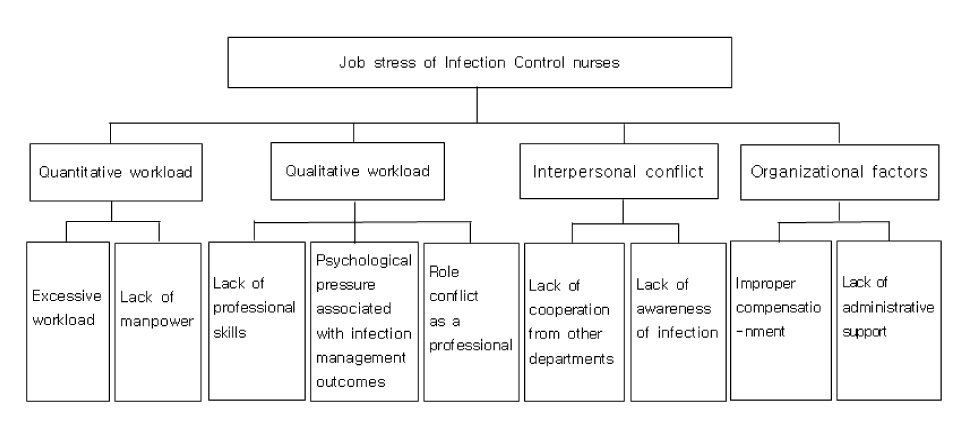1Department of Nursing, Nambu University, Korea.
2Department of Nursing, Chosun University, Korea.
Copyright © 2013 Korean Academy of Nursing Administration
This is an open access article distributed under the terms of the Creative Commons Attribution Non-Commercial License (http://creativecommons.org/licenses/by-nc/3.0/), which permits unrestricted non-commercial use, distribution, and reproduction in any medium, provided the original work is properly cited.


Job Stress according to General and Job related Characteristics of Participants (N=212)
ICN=Infection control nurses.
Factor Analysis
EV=Explained variance; AV=Accumulative variance.
Internal Reliability of the Job Stress Measurement Tool and the Level of Job Stress (N=212)
ICN=Infection control nurses.
EV=Explained variance; AV=Accumulative variance.